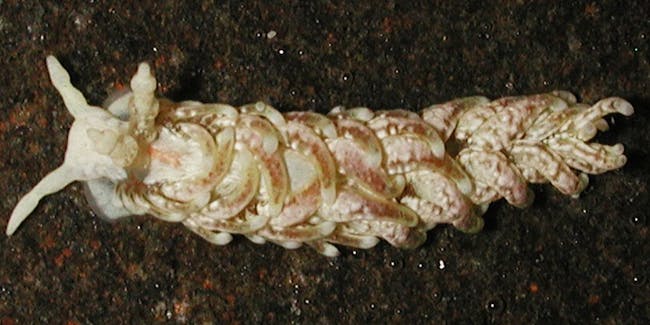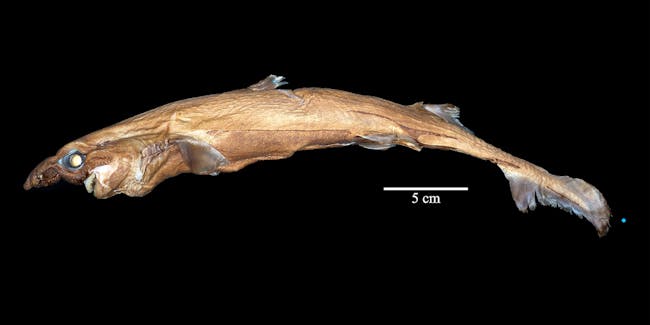Scorpions, slugs, and Dracula ants, oh my.
While we’re seemingly surrounded on this world by fantastic fauna and flora, we don’t actually have a great sense of all the critters that are out there. Scientists estimate that more than 90 percent of species have not been discovered, and furthermore, many of those that have been spotted haven’t yet been officially documented.
Over the course of 2017, researchers associated with the California Academy of Sciences identified dozens of animals and plants sourced from three oceans and spanning five continents. Looking through the full list, one thing jumps out: Some of these animals look hella weird.
Shannon Bennet, Ph.D., the Academy Chief of Science, explained in a statement that documenting Earth’s biodiversity is very important as many species, freaky-looking or not, are quickly going extinct. “[We] are not only losing members of the tree of life; we are also forfeiting potential breakthroughs in medicine, agricultural pollinators, water purifiers, and many other critical components of a healthy planet,” she said.
While all of the new creatures have something to offer, below Inverse offers you the five we consider the straight-up freakiest.

The Bulbaeolidiella paulae is a sea slug that was discovered by Terry Gosliner, Ph.D., a scientist in the department of invertebrate zoology and geology at the Academy. Gosliner is considered one of the top authorities on nudibranchs — soft-bodied mollusks found in the oceans, like this little guy.

Gosliner also discovered the Rostanga ghiselini, a sea slug from Baja, California. Named for a mentor and teacher of Gosliner, Michael Ghiselin, this slug was first identified in Baja but can be found throughout the Gulf of California. Finding the slug in order to identify it, said Gosliner’s teammate Hans Bertch, Ph.D., a professor at the Universidad Autónoma de Baja California, in his blog was a 25-year hunt. At only 30 millimeters long, it’s no wonder the slug was hard to find.

The Etmopterus lailae was discovered in Hawaii and identified by a team of scientists including David Ebert, Ph.D., the Ichthyology research associate at the Academy. It’s colloquially known as Lailae’s Lanternshark. This deep-sea shark lives 1,000 feet below the surface of the Pacific Ocean and glows in the dark. Less than a foot long and weighing under two pounds, this particular shark was actually captured as a specimen 17 years ago but was only identified as a new species in July.

The Rhopalaurus ochaoi is a newly discovered club-tailed scorpion, found in Venezuela. It was identified by a team of scientists that included Academy entomologist Lauren Esposito, Ph.D., who serves as the Chair of Arachnology. These types of scorpions are fine living in a variety of landscapes — including savannas, caves, deserts, and forests — and have the unique ability to tell predators to “back off” by packing sounds by rubbing a comb-like tail against their abdomen.

This ant, more commonly known as a Dracula ant, is so named because they suck the blood of their own larvae. While Dracula ants can be found in Madagascar, this new species — the Stigmatomma luyiae — was identified in Taiwan by Flavia Esteves, Ph.D., a researcher in the Department of Entomology at the Academy.
(For the source of this, and many other interesting articles, please visit: https://www.inverse.com/article/39604-new-species-discovered-2017/)









